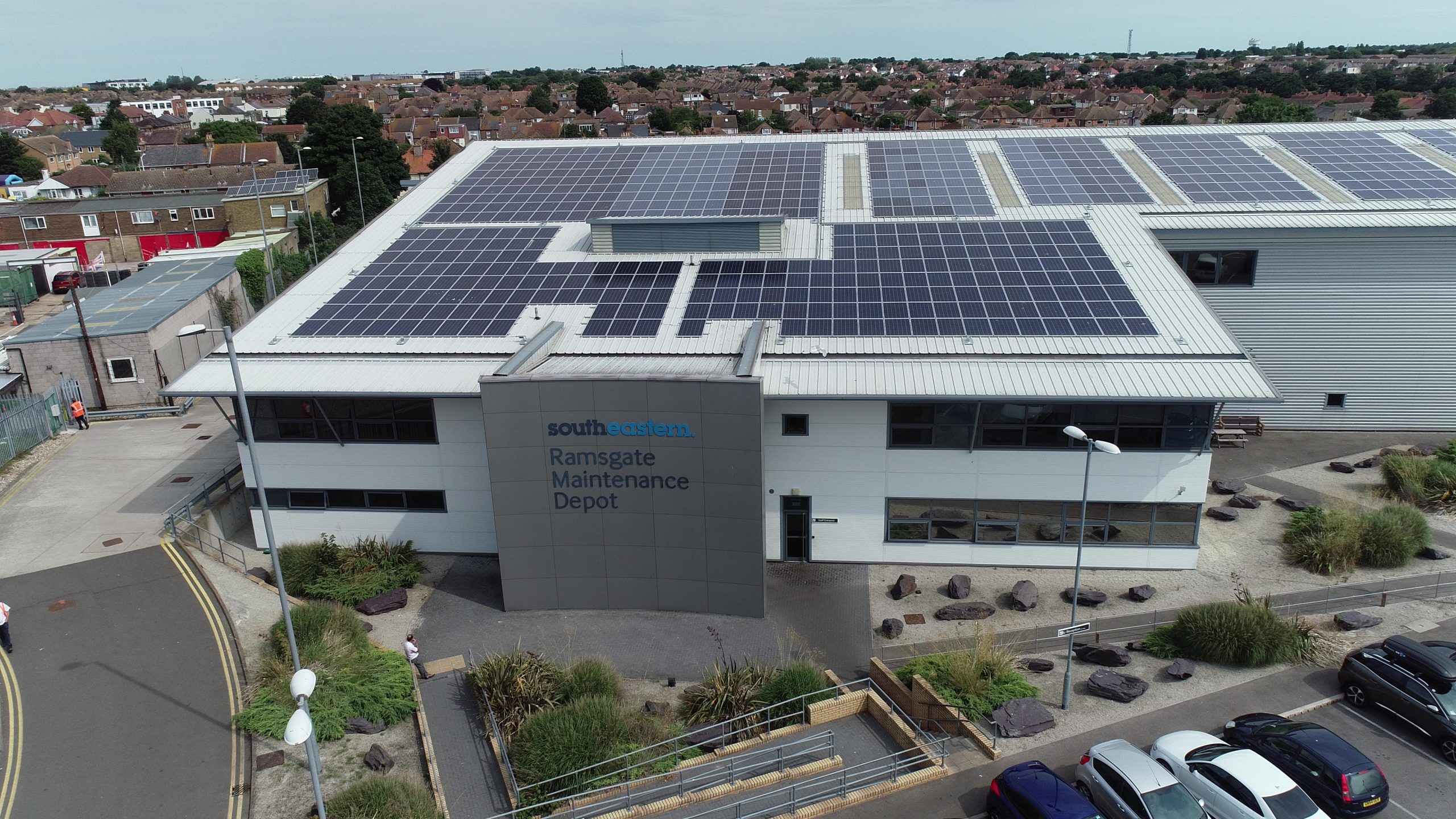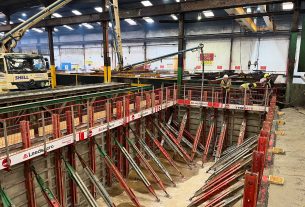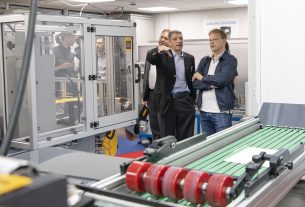KH Engineering Services Limited (KHES), providers of a comprehensive range of electrical engineering and mechanical services and a part of M Group Services, has completed the first major photovoltaic (PV) deployment on the UK rail network outside of London on behalf of Southeastern.
The photovoltaic system is a power system designed to supply usable solar power by means of photovoltaics – the production of electric currents at the junction of two substances exposed to light – intended to deliver significant carbon and electricity savings. In explaining the rationale behind the project, Darren Bates, KHES Managing Director, emphasises that: “Renewable energy has an important role to play, and KHES joins Southeastern in encouraging other train companies to follow this lead and deliver more renewable energy capacity to help decarbonise the rail network.”
The project involved the addition of solar PV arrays, an interconnected system of PV modules that function as a single electricity-producing unit, to train berthing, cleaning and maintenance facilities located at Southeastern Light Maintenance Depots (LMDs) at four stations;
· Grove Park, south London
· Gillingham, Kent
· Ramsgate, Kent
· West Marina, East Sussex
In total, just under 3,000 panels, producing 780 kWp (Kilowatt peak) of solar PV capacity, were installed. The process included; a review of renewable energy technology options; analysis of half-hourly electricity meter data and the development of scheme economics; preparation of technical specification and support with procurement documentation and supplier selection; review of building structures; completion of Network Rail assurance process; feed-in-tariff (FiT) accreditation; support around Power Purchase Agreements (PPA) and Renewable Energy Guarantees of Origin (REGO) with FiT Licensees.
The installation of the four arrays is already generating large amounts of emission free electricity and delivering carbon reductions from Southeastern’s portfolio. The largest array at Ramsgate LMD (330kWp) is expected to generate at least 300 MWh of clean electricity each year, equivalent to the energy used by around 80 average houses.
KHES led the design of the PV arrays and included web-enabled technology (used for remote monitoring) that will automatically identify any loss of performance requiring maintenance intervention. The solar arrays also use TIGO DC power optimisation technology which ensures that optimal power generation and output is maintained at all times. Extensive temporary and permanent access systems were required to provide safe working conditions due to risk of falls from height and proximity to the operational railway.
The existing and relatively lightweight 1940s roof structures required detailed civil engineering expertise, provided by Frankham Consultancy Group, to ensure that the current structure could carry the additional weight of the PV panels, mounting systems and associated ‘man-safe’ access ways. This included steel strength testing at Grove Park and Gillingham, as well as structural integrity analysis at all sites.
The Blackfriars station solar PV array, located on the roof of the new Thameslink station in central London, is believed to be the largest PV array on the UK rail network, and was used as a reference site. This project, overseen by Network Rail, provided useful insights as early consultations ensured that guidance could be provided on the basic requirements for installing solar PV in an operational railway environment.
Darren Bates commented: “The project was not without its challenges, but through effective collaboration we are proud to have delivered a first for the rail industry. Solar PV was assessed to be the most operationally suitable renewable energy technology, and one that incurs minimal post-installation intervention. The project required both senior management and staff to meticulously coordinate at all levels to ensure the PV arrays were installed efficiently and safely. Ultimately, solar power is good for the planet and the railway, and it also makes good business sense.”
Southeastern Head of Facilities, Peter Stapleton, added: “We always want to do more to reduce our carbon footprint and by enhancing the supply to our train maintenance depots we’ve been able to do just that. Since KHES finished the installation, we’ve been able to run some depots entirely off-grid from the PV arrays, thus reducing our demand. What’s more, we were able to commission KHES to undertake this work without having any impact on the operational depots, benefitting passengers by ensuring that trains were able to enter and exit the depot at all times and our maintenance teams were able to go about their work.”
Other aspects of the project included prior approval to install under Southeastern’s permitted development rights, consent from Local Planning Authorities and working with the local District Network Operator (DNO), UK Power Networks, to obtain permission to connect the PV arrays to the local electricity grid.
Engagement with the DNO resulted in the need for electricity supply upgrades, most notably at West Marina LMD where the incoming power supply and import metering were upgraded and the power distribution cable within the depot was replaced. These enabling works, overseen by KH Engineering Services, required various isolations and depot power downs, delivered in collaboration with the local depot manager and operational teams. The methodology for installation was refined to ensure the delivery could take place whilst the depots remained operational. Considerations such as roof access arrangements, electrical isolations, material offloading, communication with third parties and safe systems of work were well thought-out from the project conception to ensure minimal disruptions during the installation period.
The client required the works to be completed in a hostile rail environment whilst working towards a tight timeframe. The design and installation would consider future maintenance works and implement safe methods of work for PV panel upkeep and annual inspections, along with testing & certification. All works were undertaken as agreed: fully operational and defect-free. With minimal delay and strong working relationships with depot staff maintained, the budget was managed and final account agreed.
To view a 45-second time lapse video encompassing the project from start to finish please click here:




